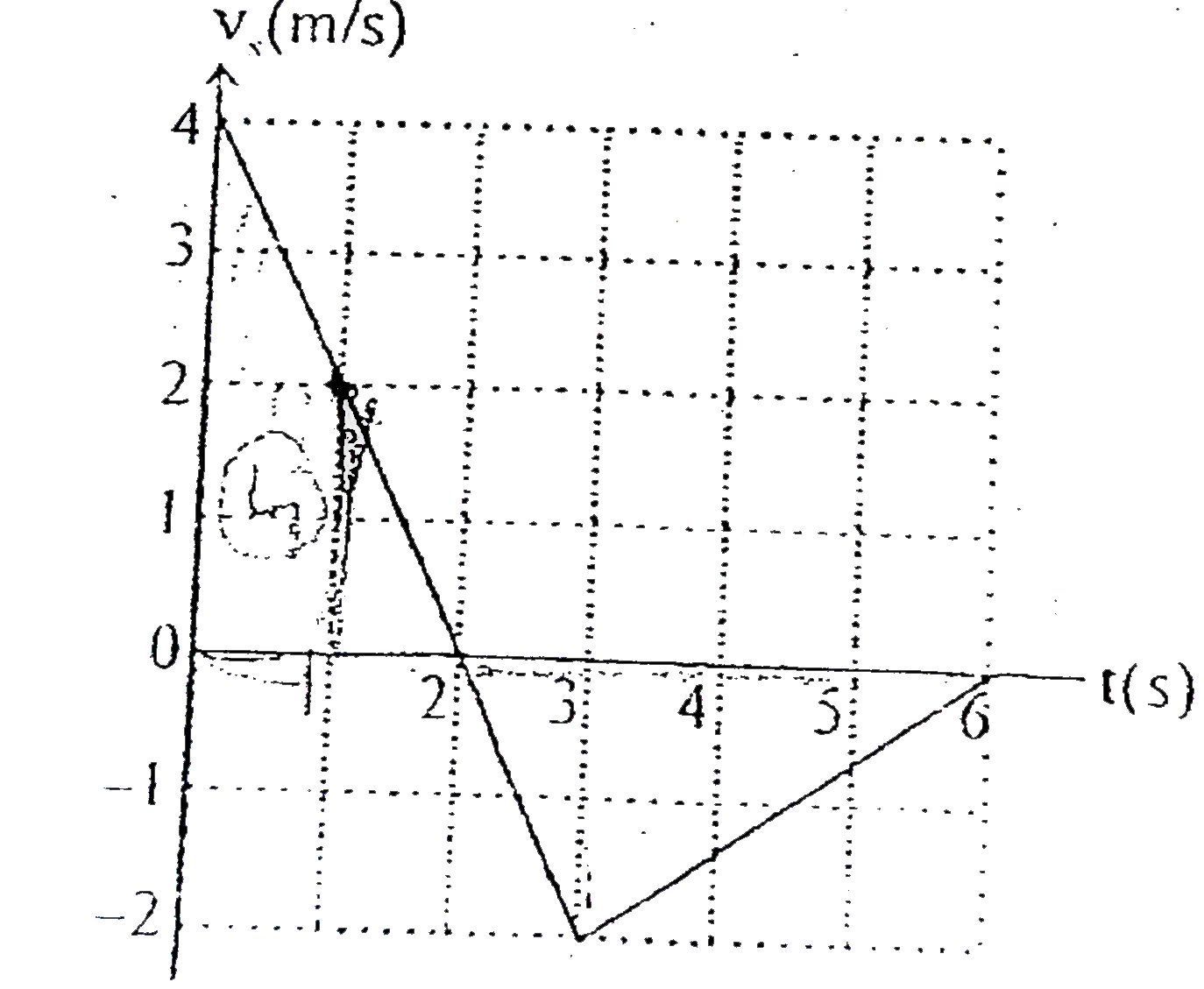A particle moves along the X-axis as x=u(t−2s)=at(t−2)2.
the initial velocity of the particle is u
the acceleration of the particle is a
the acceleration of the particle is 2a
at t=2 s particle is at the origin.
The correct Answer is:C, D
To solve the problem, we need to analyze the motion of a particle described by the equation:
x=u(t−2)+a(t−2)2
where u is the initial velocity, a is the acceleration, and t is the time.
1. Identify the Position Function:
The position of the particle is given by:
x(t)=u(t−2)+a(t−2)2
2. Differentiate to Find Velocity:
To find the velocity v(t), we differentiate the position function with respect to time t:
v(t)=dxdt=ddt(u(t−2)+a(t−2)2)
Using the product and chain rules:
v(t)=u+2a(t−2)
3. Calculate Initial Velocity:
To find the initial velocity at t=0:
v(0)=u+2a(0−2)=u−4a
Since the initial velocity is given as u, we have:
u−4a=u⟹−4a=0⟹a=0
This indicates that the acceleration a is zero.
4. Differentiate to Find Acceleration:
The acceleration a(t) is the derivative of the velocity:
a(t)=dvdt=ddt(u+2a(t−2))=2a
5. Check Particle's Position at t=2:
To check if the particle is at the origin when t=2:
x(2)=u(2−2)+a(2−2)2=0+0=0
This confirms that the particle is indeed at the origin at t=2.
Summary of Results:
- Initial velocity v(0)=u−4a indicates that if a≠0, the initial velocity is not u.
- The acceleration is 2a.
- The particle is at the origin when t=2.
Conclusion:
- The initial velocity is not u if a is non-zero.
- The acceleration of the particle is 2a.
- The particle is at the origin at t=2.
The position of the particle is given by:
x(t)=u(t−2)+a(t−2)2
To find the velocity v(t), we differentiate the position function with respect to time t:
v(t)=dxdt=ddt(u(t−2)+a(t−2)2)
Using the product and chain rules:
v(t)=u+2a(t−2)
To find the initial velocity at t=0:
v(0)=u+2a(0−2)=u−4a
Since the initial velocity is given as u, we have:
u−4a=u⟹−4a=0⟹a=0
This indicates that the acceleration a is zero.
The acceleration a(t) is the derivative of the velocity:
a(t)=dvdt=ddt(u+2a(t−2))=2a
To check if the particle is at the origin when t=2:
x(2)=u(2−2)+a(2−2)2=0+0=0
This confirms that the particle is indeed at the origin at t=2.
- Initial velocity v(0)=u−4a indicates that if a≠0, the initial velocity is not u.
- The acceleration is 2a.
- The particle is at the origin when t=2.
- The initial velocity is not u if a is non-zero.
- The acceleration of the particle is 2a.
- The particle is at the origin at t=2.
Topper's Solved these Questions
- REST AND MOTION : KINEMATICSBOOK - HC VERMACHAPTER - REST AND MOTION : KINEMATICSEXERCISE - Exercises
51 Videos
- REST AND MOTION : KINEMATICSBOOK - HC VERMACHAPTER - REST AND MOTION : KINEMATICSEXERCISE - Objective 1
13 Videos
- PHYSICS AND MATHEMATICSBOOK - HC VERMACHAPTER - PHYSICS AND MATHEMATICSEXERCISE - Exercises
34 Videos
- ROTATIONAL MECHANICSBOOK - HC VERMACHAPTER - ROTATIONAL MECHANICSEXERCISE - Exercises
86 Videos
Similar Questions
A particle is moving along the x-axis such that s=6t−t2, where s in meters and t is in second. Find the displacement and distance traveled by the particle during time interval t=0 to t=5s.
View SolutionA particle moves along the x-axis so that its position is given x=2t3–3t2 at a time t second. What is the time interval duringwhich particle will be on the negative half of the axis?
View Solution
Knowledge Check
A particle moves along x-axis as x=t(t−2)+(t−2)2 . Which of the following is true?
AThe initial velocity of particle is 4BThe accekeration of particle varies with timeCThe particle is at origin at t = 0DNone of theseA particle moves along x-axis as x=4(t−2)+a(t−2)2
Which of the following is true?AThe initial velocity of particle is 4Bthe acceleration of particle is 2aCThe particle is at origin at t=0Dnone of theseA particle moves along the x-axis in such a way that its x-co-ordinate varies with time as x=2–5t+6t2.
The initial velocity and acceleration of particle will respectively be-A–5 m/s, 12 m/sB5 m/s, –12 m/sC–5 m/s, –12 m/sD5 m/s, 12 m/s
The displacement -time equation of a particle moving along x -axis is x=t33−t22+20The acceleration -velocity equation of the particle is a2=KV+1 Then the value of K is
View SolutionA particle moves along the X-axis. Its X-coordinate varies with time according to the expression x=4t+2r2, where x is in meters and t is in seconds. The position-time graph for this motion is shown in the figures previously. Note that the particle moves in the negative X-direction for the first second of motion, is at rest at the moment t=1s, and then heads back in the positive X-direction for t>1s.
Find the displacement of the particle in the time interval t=1sto t=3s.
View SolutionA particle moves along the X-axis. Its X-coordinate varies with time according to the expression x=4t+2r2, where x is in meters and t is in seconds. The position-time graph for this motion is shown in the figures previously. Note that the particle moves in the negative X-direction for the first second of motion, is at rest at the moment t=1s, and then heads back in the positive X-direction for t>1s.
Find the displacement of the particle in the time interval t=0 s to t=1 s.
View SolutionVx is the velocity of a particle of a particle moving along the x−axis as shown. If x=2.0m at t=1.0s, what is the position of the particle at t=6.0s?

View SolutionA particle moves along the X-axis. The position x of particle w.r.t. time from origin given by x=b0+b1+b2t2 .The acceleration of particle is
View Solution
